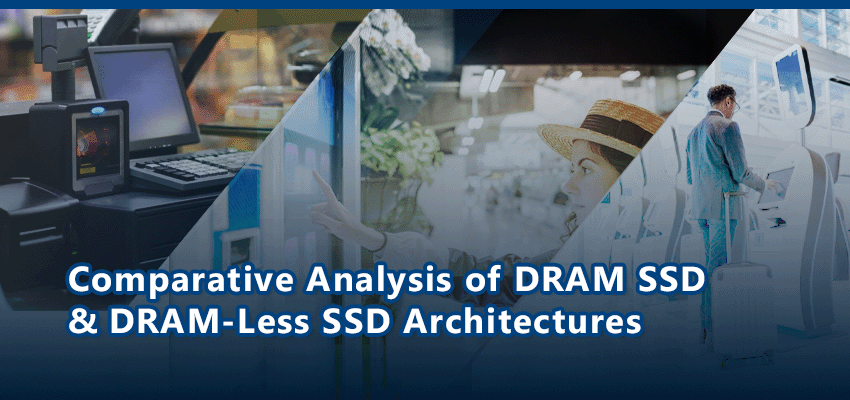Comparative Analysis of DRAM SSD and DRAM-Less SSD Architectures
1/2/2567

Comparative Analysis of DRAM SSD and DRAM-Less SSD Architectures
DRAM SSDs incorporate a DRAM chip in their design, serving as a cache for frequently accessed data to enhance overall performance. The inclusion of DRAM enables quicker random read and write operations, particularly in scenarios involving intensive access patterns.
DRAM-less SSDs, as the name implies, lack an integrated DRAM chip. Instead, they utilize alternative methods, such as leveraging the host system's RAM or utilizing on-board NAND flash memory for caching purposes. While this cost-cutting approach is effective, it may impact performance as overall storage space decreases, particularly in specific workloads.
Typically, DRAM SSDs exhibit superior overall performance, especially in tasks that involve random access and multitasking. The inclusion of DRAM facilitates efficient data management, minimizing latency and enhancing responsiveness. Although DRAM-less SSDs can still deliver commendable performance, particularly in sequential read and write operations, they may experience performance degradation in specific situations, such as when managing complex workloads with a combination of random and sequential access patterns. The manufacturing of DRAM SSDs is frequently more costly due to the inclusion of DRAM. Nonetheless, the extent of this cost difference can fluctuate depending on factors like the capacity and quality of the DRAM used. DRAM-less SSDs are typically more cost-effective to manufacture, as they avoid the additional expense associated with integrating a DRAM chip. This cost advantage makes DRAM-less SSDs a more budget-friendly choice for specific applications.
Use Cases:
DRAM-less SSDs are commonly employed in situations where cost is a crucial consideration, and performance demands are not as high. They can be suitable for everyday computing tasks, although their performance may not be as consistent in certain demanding workloads.
In summary, the choice between DRAM SSDs and DRAM-less SSDs hinges on the user's specific requirements and budget considerations. DRAM SSDs are typically favored for high-performance computing tasks, whereas DRAM-less SSDs provide a more budget-friendly alternative for less demanding applications.
*The disclosure of information regarding the inclusion or exclusion of DRAM will be provided in the monthly price list.
Ordering Information:
|
Feature |
DRAM SSD |
DRAM-less SSD |
|
Presence of DRAM |
Contains dedicated DRAM cache |
No dedicated DRAM cache |
|
Performance |
High sequential read/write speeds With faster random write speeds |
Similar sequential speeds, but Slower random write speeds |
|
Latency |
Lower latency |
Higher latency |
|
Power Consumption |
Higher power consumption |
Lower power consumption |
|
Cost |
Higher |
Generally, cost effective |
|
Endurance |
Higher endurance |
Lower endurance |
|
Application |
Suitable for write intensive workloads |
Suitable for mainstream read workload |
|
Cache Management |
Enhanced with dedicated DRAM cache |
Relies on host system cache |
